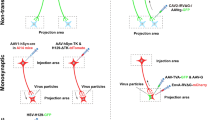Abstract
The increased generation of free radicals results in the formation of fluorescent end-products of lipid peroxidation, lipofuscin-like pigments (LFPs). The authors observed that LFPs are generated in rat brain after a normal birth during 5 postnatal days. The experimental design of the study comprised 10 groups of animals. The authors measured prenatal values 1 day and 7 days before birth, and then the animals were sampled on postnatal day 1, 2, 5, 10, 15, 25, 35, and 90. Maximum LFP concentration is achieved on the postnatal day 2. Starting from postnatal day 10, LFP concentration returns to prenatal values. A new rise in LFP concentration is observed at 3 months of age. This is associated with the beginning of the aging process. LFPs were characterized by fluorescence spectroscopy using tridimensional excitation spectra, synchronous spectra and their derivatives, and HPLC with fluorescence detection. It was possible to discern several tens of fluorescent compounds of unknown structure that are generated and metabolized during early development. The authors suggest that LFPs are formed after respiratory burst of microglia phagocytosing apoptotic cells.




Similar content being viewed by others
References
Harman D (1956) Aging: a theory based on free radical and radiation chemistry. J Gerontol 11:298–300
Harman D (2003) The free radical theory of aging. Antioxid Redox Signal 5:557–561
Chance B, Sies H, Boveris A (1979) Hydroperoxide metabolism in mammalian organs. Physiol Rev 59:527–605
Navarro A, Boveris A (2004) Rat brain and liver mitochondria develop oxidative stress and lose enzymatic activities on aging. Am J Physiol Regul Integr Comp Physiol 287:R1244–R1249
Kann O, Kovács R (2007) Mitochondria and neuronal activity. Am J Physiol Cell Physiol 292:C641–C657
Jamieson DD (1991) Lipid peroxidation in brain and lungs from mice exposed to hyperoxia. Biochem Pharmacol 41:749–756
Svoboda P, Lodin Z (1972) Postnatal development of some mitochondrial enzyme activities of cortical neurons and glial cells. Physiol Bohemoslov 21:457–465
Svoboda P, Lodin Z (1973) Ontogenic development of oxidative capacity of the brain. Physiol Bohemoslov 23:434
Kuan CY, Roth KA, Flavell RA et al (2000) Mechanisms of programmed cell death in the developing brain. Trends Neurosci 23:291–297
Marín-Teva JL, Dusart I, Collin C et al (2004) Microglia promote the death of developing Purkinje cells. Neuron 41:535–547
Witz G, Lawrie NJ, Zaccaria A et al (1986) The reaction of 2-thiobarbituric acid with biologically active alpha, beta-unsaturated aldehydes. Free Radic Biol Med 2:33–39
Weber GF (1990) The measurement of oxygen-derived free radicals and related substances in medicine. J Clin Chem Clin Biochem 28:569–603
Chio KS, Reiss V, Fletcher B et al (1969) Peroxidation of subcellular organelles: formation of lipofuscin-like pigments. Science 166:1535–1536
Armstrong D, Wilhelm J, Smid F et al (1992) Chromatography and spectrofluorometry of brain fluorophores in neuronal ceroid lipofuscinosis (NCL). Mech Ageing Dev 64:293–302
Wihlmark U, Wrigstad A, Roberg K et al (1996) Lipofuscin formation in cultured retinal pigment epithelial cells exposed to photoreceptor outer segment material under different oxygen concentrations. APMIS 104:265–271
Wilhelm J, Herget J (1999) Hypoxia induces free radical damage to rat erythrocytes and spleen: analysis of the fluorescent end-products of lipid peroxidation. Int J Biochem Cell Biol 31:671–681
Bonnefont-Rousselot D, Gardes-Albert M, Lepage S et al (1992) Effect of pH on low-density lipoprotein oxidation by O2 −/HO2 free radicals produced by gamma radiolysis. Radiat Res 132:228–236
Wilhelm J, Brzak P, Rejholcova M (1989) Changes in lipofuscin-like pigments in erythrocytes and spleen after whole-body gamma irradiation of rats. Radiat Res 120:227–233
Wilhelm J, Sonka J (1981) Time-course of changes in lipofuscin-like pigments in rat liver homogenate and mitochondria after whole body gamma irradiation. Experientia 37:573–574
Shimasaki H, Maeba R, Tachibana R et al (1995) Lipid peroxidation and ceroid accumulation in macrophage cultured with oxidized low density lipoprotein. Gerontology 41(Suppl 2):39–48
Vasankari T, Kujala U, Heinonen O et al (1995) Measurement of serum lipid peroxidation during exercise using three different methods: diene conjugation, thiobarbituric acid reactive material and fluorescent chromolipids. Clin Chim Acta 234:63–69
Goldstein BD, McDonagh EM (1976) Spectrofluorescent detection of in vivo red cell lipid peroxidation in patients treated with diaminodiphenylsulfone. J Clin Investig 57:1302–1307
Randerath E, Zhou G-D, Randerath K (1997) Organ-specific oxidative DNA damage associated with normal birth in rats. Carcinogenesis 18:859–866
Sastre J, Asensi M, Rodrigo F et al (1994) Antioxidant administration to the mother prevents oxidative stress associated with birth in the neonatal rat. Life Sci 54:2055–2059
Pellardo FV, Sastre J, Asensi M et al (1991) Physiological changes in glutathione metabolism in fetal and newborn liver. Biochem J 274:891–893
Gunther T, Hollriegl V, Vormann J (1993) Perinatal development of iron and antioxidant defense systems. J Trace Elem Electrolytes Health Dis 7:47–52
Brunk UT, Terman A (2002) Lipofuscin: mechanisms of age-related accumulation and influence on cell function. Free Radic Biol Med 33:611–619
Acknowledgments
This study was supported by Grant Agency of AS CR (IAA500110606), The Centre of Neurosciences (project of Ministry of Education of the Czech Republic LC 554), and by the Academy of Sciences of the Czech Republic (AV0Z50110509).
Author information
Authors and Affiliations
Corresponding author
Rights and permissions
About this article
Cite this article
Wilhelm, J., Ivica, J., Kagan, D. et al. Early postnatal development of rat brain is accompanied by generation of lipofuscin-like pigments. Mol Cell Biochem 347, 157–162 (2011). https://doi.org/10.1007/s11010-010-0623-2
Received:
Accepted:
Published:
Issue Date:
DOI: https://doi.org/10.1007/s11010-010-0623-2




